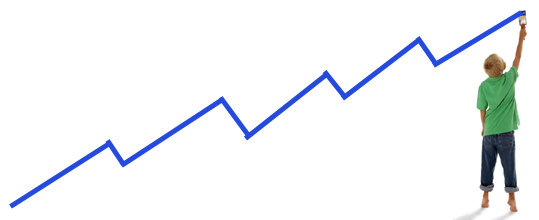
Abrakadoodle Students Score in Creativity Testing
Abrakadoodle conducted research during the 2011-2012 school year to determine if students exhibited gains when participating in the Abrakadoodle Art Education Program. Abrakadoodle provides a total art curriculum, art instruction conducted by an Abrakadoodle trained teacher and art materials at charter schools and private schools around the country. Students who were new to the Abrakadoodle program were tested in the fall and then again after participating in the Abrakadoodle program for seven months. The Educational Resource Group administered the Torrance® Tests of Creative Thinking. Fifty-two (52) second and fifth grade students from diverse backgrounds took part.
Overall grade scores for the entire group increased by 7 percentage points, as the scores related to the national averages. Most dramatic results were apparent among the fifth grade students, who had scored significantly below the national averages in the pretest. In addition to the Abrakadoodle Art in Our World Curriculum and Education Program, fifth graders had participated in Abrakadoodle’s Creativity Boost™ Exercises.
The highly reliable Torrance® Tests of Creative Thinking TTCT are the most widely used tests of their kind. Students in this study participated in the Figural TTCT Forms A and B: Thinking Creatively with Pictures, which includes exercises to assess five characteristics related to creative thinking. Scoring was based upon grade-related norms. The TTCT is most widely used to determine eligibility for talented and gifted programs. Normative data has been gathered from more than 55,000 students in the US and Canada. The test has been offered in more than 35 countries.
According to Mary C. Rogers, MA.ED, CEO and Co-founder of Abrakadoodle, “We know that student creative abilities decrease as they move through the grades. We are encouraged by preliminary results that may indicate that students who participate in Abrakadoodle’s quality art education programs can slow and even reverse that trend. We anticipate conducting further research to more fully assess the effects of our program on student creativity. Part of what makes our art education program unique is our devotion to creativity skills development, which is an important component of our Art in Our World Curriculum and Education Program.”
